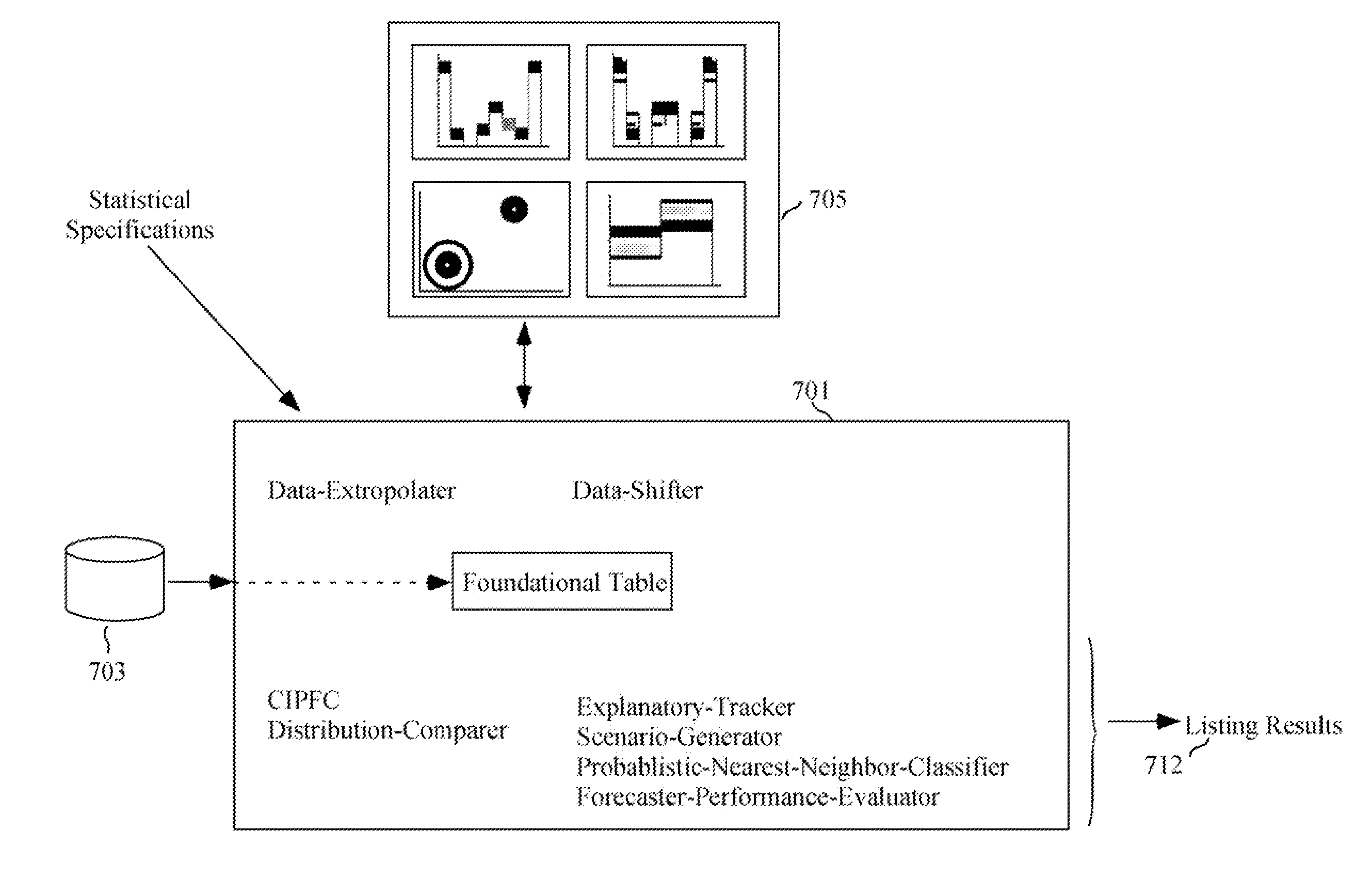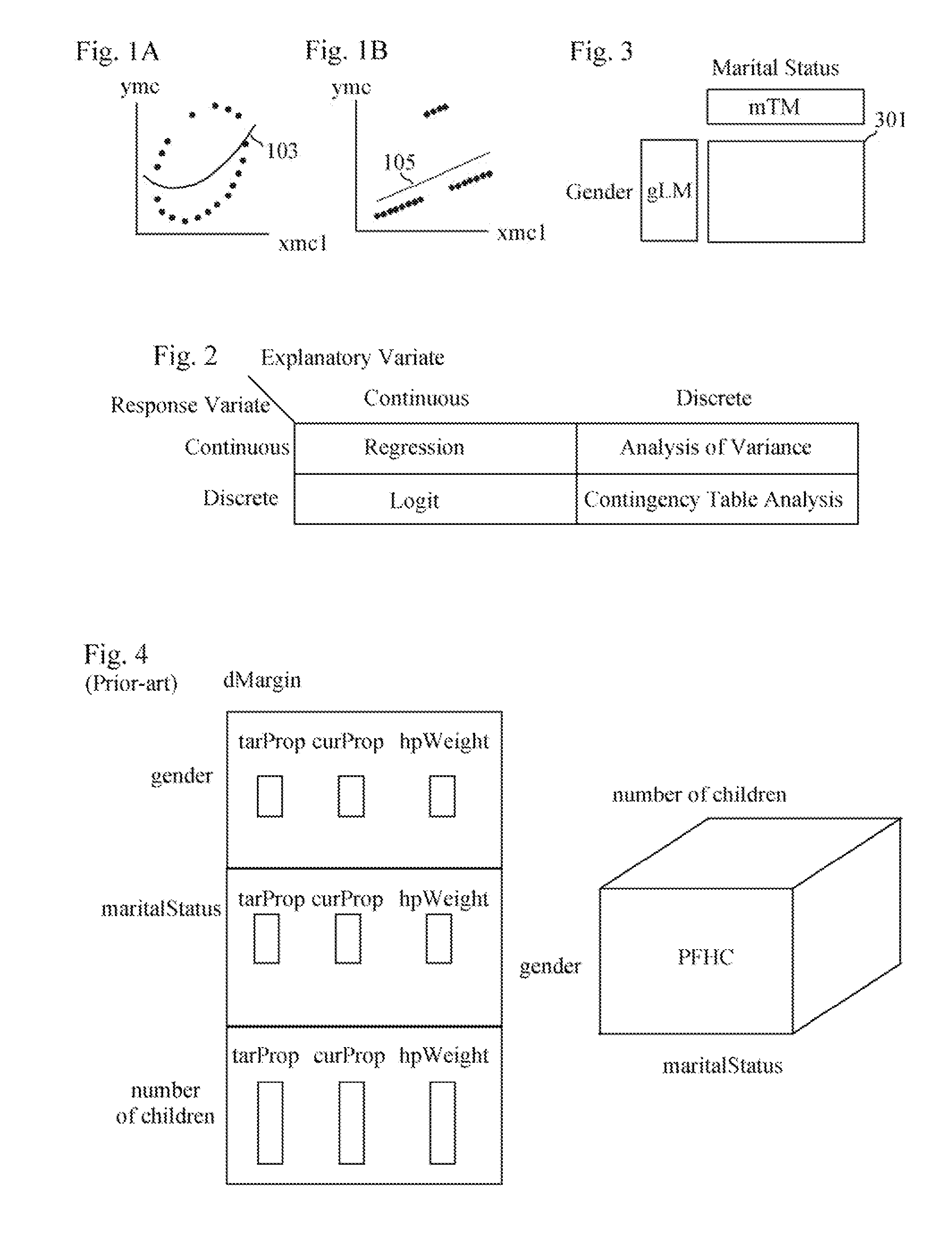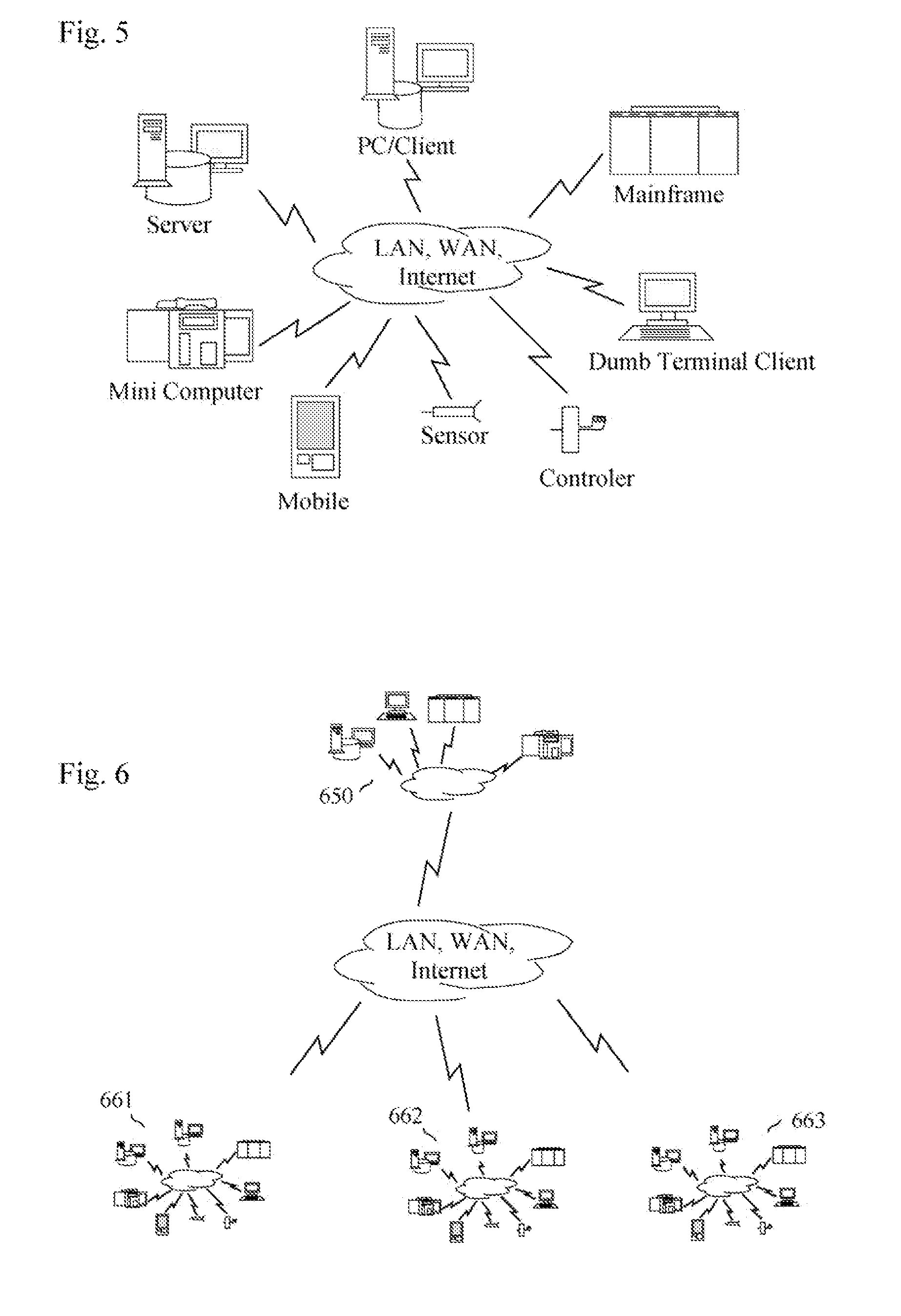Optimal Scenario Forecasting, Risk Sharing, and Risk Trading
a risk trading and optimal scenario technology, applied in the field of statistical analysis and risk sharing, can solve the problems of inability to accurately determine coefficients, ever-larger empirical data sets, errors and distortions, etc., and achieve the effect of accurately portraying future probabilities
- Summary
- Abstract
- Description
- Claims
- Application Information
AI Technical Summary
Benefits of technology
Problems solved by technology
Method used
Image
Examples
embodiment
IV. Embodiment
[0294] IV.A. Bin Analysis Data Structures [0295] IV.B. Bin Analysis Steps [0296] IV.B.1. Load Raw Data into Foundational Table [0297] IV.B.2. Trend / Detrend Data [0298] IV.B.3. Load BinTabs [0299] IV.B.4. Use Explanatory-Tracker to Identify Explanatory Variates [0300] IV.B.4.a Basic-Explanatory-Tracker [0301] IV.B.4.b Simple Correlations [0302] IV.B.4.c Hyper-Explanatory-Tracker [0303] IV.B.5. Do Weighting [0304] IV.B.6. Shift / Change Data [0305] IV.B.7. Generate Scenarios [0306] IV.B.8. Calculate Nearest-Neighbor Probabilities [0307] IV.B.9. Perform Forecaster-Performance Evaluation [0308] IV.B .10. Multiple Simultaneous Forecasters [0309] IV.C. Risk Sharing and Trading [0310] IV.C.1. Data Structures [0311] IV.C.2. Market Place Pit (MPPit) Operation [0312] IV.C.3. Trader Interaction with Risk-Exchange and MPTrader [0313] IV.D. Conclusion, Ramifications, and Scope
[0314] I. Expository Conventions
[0315] An Object Oriented Programming orientation is used here. Pseudo-code...
example # 1
EXAMPLE #1
[0964] Medical records of many people are loaded into the Foundational Table as shown in FIG. 57. These records are updated and columns created as more information becomes available, as are the BinTabs and DMBs.
[0965] During a consultation with a patient, a medical doctor estimates EFDs that regard the patient's condition and situation, which are used to weight the Foundational Tables rows. The CIPFC determines row weights. The doctor then views the resulting distributions of interest to obtain a better understanding of the patient's condition. The doctor triggers a Probabilistic-Nearest-Neighbor search to obtain a probabilistic scenario set representing likely effects of a possible drug. Given the scenario probabilities, the doctor and patient decide to try the drug. During the next visit, the doctor examines the patient and enters results into the Foundational Table for other doctors / patients to use.
[0966] A medical researcher triggers Explanatory-Tracker to identify v...
example # 2
EXAMPLE #2
[0967] The trading department of an international bank employs the present invention. The Foundational Table of FIG. 57 contains transaction, in particular pricing, data regarding currencies, government bonds, etc. Data-Extrapolator projects bond prices using Rails in order to meet certain necessary conditions.
[0968] Employee-speculators (commonly called traders, and corresponding to the Forecasters and Traders generally referenced in through-out this specification) enter EFDs. The CIPFC determines Foundational Table row weights. Scenarios are generated and inputted into Patents '649 and '577. Patents '649 and '577 optimizes positions / investments. Trades are made to yield an optimal portfolio. Employee-speculators are paid according to Equation 3.0.
PUM
 Login to View More
Login to View More Abstract
Description
Claims
Application Information
 Login to View More
Login to View More - R&D
- Intellectual Property
- Life Sciences
- Materials
- Tech Scout
- Unparalleled Data Quality
- Higher Quality Content
- 60% Fewer Hallucinations
Browse by: Latest US Patents, China's latest patents, Technical Efficacy Thesaurus, Application Domain, Technology Topic, Popular Technical Reports.
© 2025 PatSnap. All rights reserved.Legal|Privacy policy|Modern Slavery Act Transparency Statement|Sitemap|About US| Contact US: help@patsnap.com



